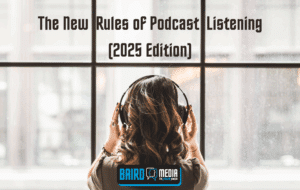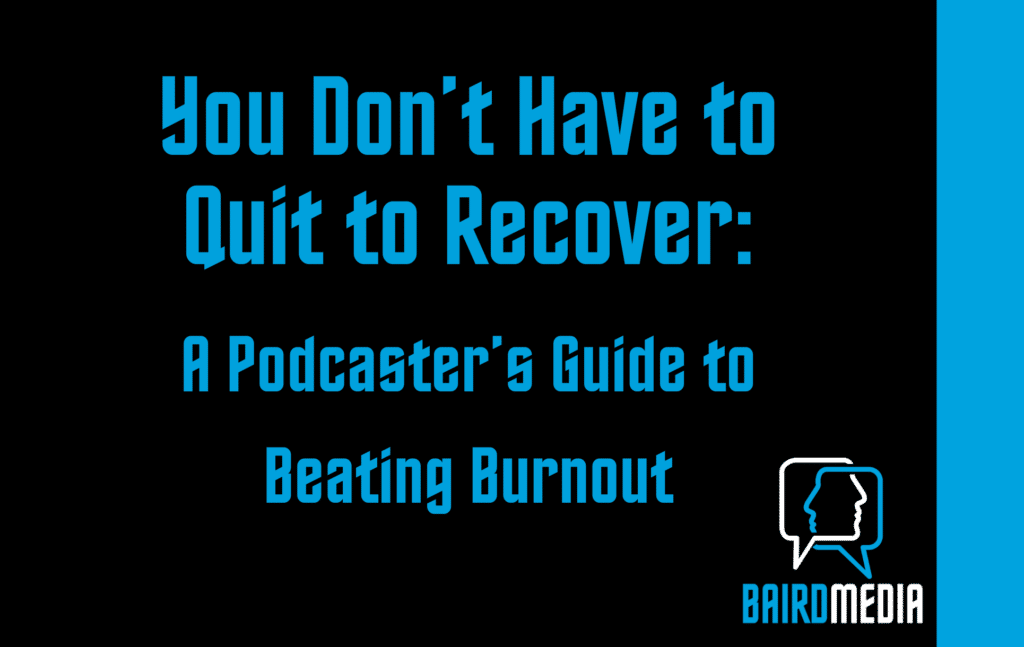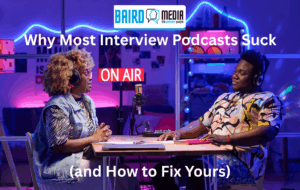Here’s how you can restore your energy and realign your podcast — without shutting it down.
1. Take a purposeful break
One of the most powerful tools at your disposal is a well-timed pause.
But here’s the key — make it intentional.
Tell your audience you’re taking a break.
Name the reason (recovery, strategy, retooling) and set a rough return timeframe.
You’ll be surprised how understanding your listeners can be when you’re honest.
Use your break to:
– Reflect on what’s working and what’s not
– Revisit your goals and audience
– Rest — seriously, don’t just catch up on other work
– Consider whether your format, frequency, or workflow needs to change
A good break can rekindle creativity, rebuild motivation, and give you perspective on how to move forward more sustainably.
2. Switch to a seasonal format
Podcasting doesn’t have to be forever.
It can be for now.
A seasonal model gives you the freedom to produce in focused sprints with planned rest periods in between.
Instead of an open-ended weekly release schedule, consider:
– 6–12 episode seasons, followed by a break
– Thematic arcs — each season explores one theme, topic, or audience need
– Mini-series — shorter formats like 3-part explorations or 5-day countdowns
– Releasing “event-style” drops, then stepping away
This structure works particularly well for narrative, educational, or documentary-style shows.
But it can also refresh interviews or solo commentary formats.
If WTF had adopted this model, it might have preserved more longevity — even at its peak.
The same goes for countless indie shows that faded not because they failed, but because their creators burned out under constant pressure.
3. Batch record and schedule ahead
One of the biggest contributors to burnout is the weekly scramble — recording, editing, uploading, and promoting all within a few days.
Batching is your way out.
Here’s what it looks like:
– Record multiple episodes in a single session
– Edit them together in one focused work block
– Schedule them in advance using your podcast host
– Plan and prewrite your marketing content (e.g. LinkedIn posts, email blurbs)
Batching removes the panic and gives you margin. Even just a two-week head start can shift your entire mental state.
Pro tip: Batching also helps you identify weak points in your process.
If editing three episodes in a row is too much, maybe that’s the task to delegate or streamline.
4. Repurpose your content strategically
You don’t need new ideas every time.
You just need to make better use of the ones you already have.
Some repurposing strategies:
– Turn a full episode into multiple short social media clips
– Extract one golden quote per guest and build a post around it
– Combine several episodes into a themed highlight reel
– Transcribe and turn into blog posts or LinkedIn articles
– Revisit older episodes with new commentary or updates
At Baird Media, we work with clients to build content ecosystems from each podcast episode.
One recording can become 10+ assets.
That’s not cutting corners — it’s creating with efficiency.
5. Reconnect with your purpose and set boundaries
Ask yourself: Why did I start this podcast? Has that reason changed?
Maybe you wanted to teach.
Share stories.
Build authority.
Express yourself.
Connect with a niche.
Over time, goals drift.
Audience expectations grow.
What started as a creative joy can become a performance trap.
Take time to revisit your original intent.
Then reshape your workflow to serve it.
Set boundaries like:
– “I’ll only edit for 2 hours per episode.”
– “No episode goes out without a 7-day buffer.”
– “I publish 10 episodes per season, no more.”
– “I turn off stats tracking for a month.”
Boundaries protect your mental and creative space.
And they help ensure your podcast serves your life — not the other way around.







